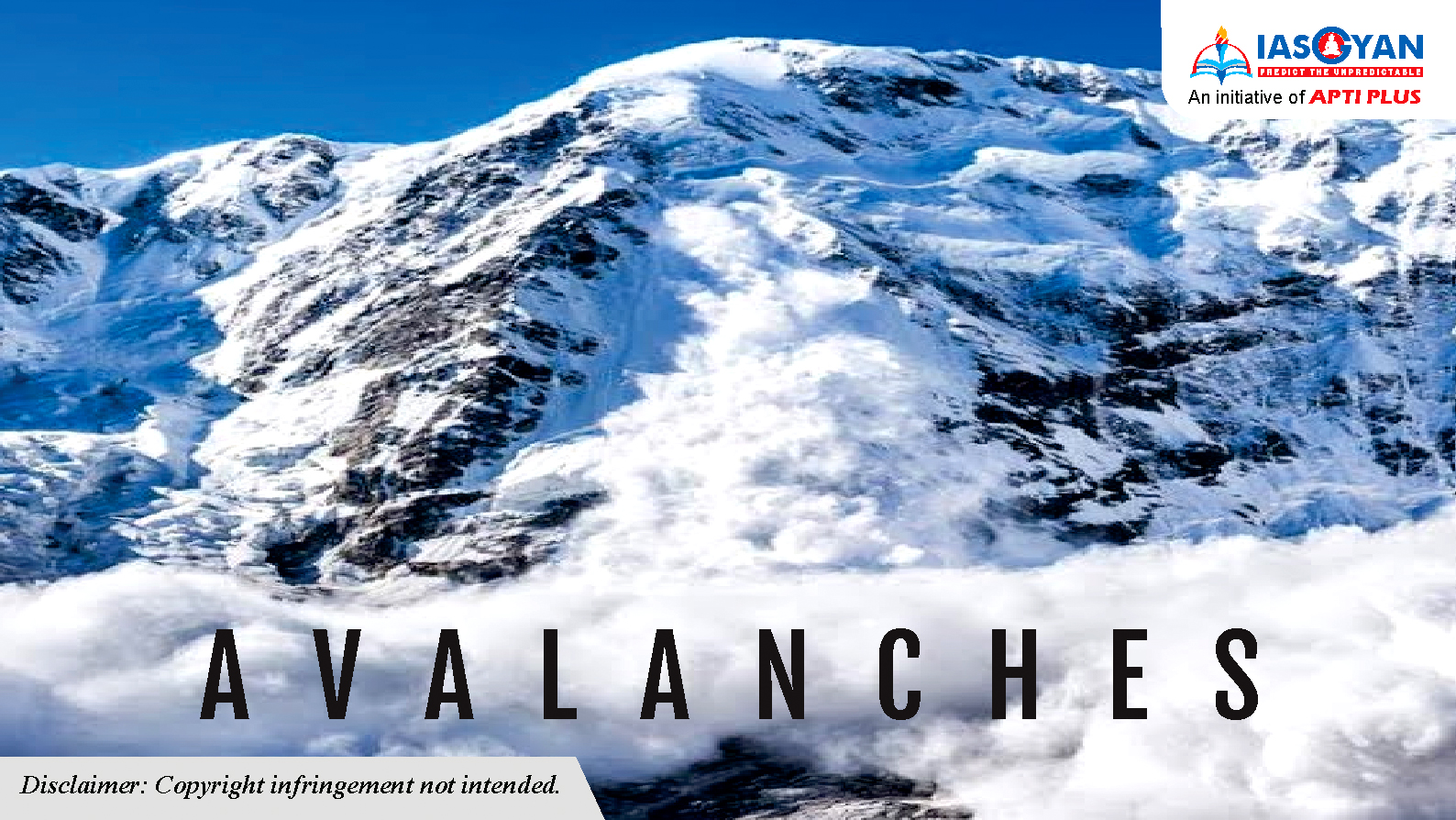




.png)
Slab avalanches
.png)
Loose snow avalanches
.png)
Cornices
.png)
Powder Snow Avalanches
.png)
.png)
Heavy Snowfall
Human Activity
Natural Causes
Vibration or Movement
Layers of Snow
Steep Slopes
Warm Temperature
Damage to Life and Property
Death or Injury
Flash floods
Property and Transportation
Utilities and Communication
Economic Impact
Crop Failure

|
Do you know? Some of the biggest shifts stemming from climate change are occurring in what scientists call the cryosphere, the regions of the world where water freezes seasonally, like the ice caps or mountain peaks. The Arctic, for example, is losing ice at its fastest rate in 1,500 years. Coming to the Himalayas, even if carbon emissions are dramatically and rapidly cut and succeed in limiting global warming to 1.5C, 36% of the glaciers along in the Hindu Kush and Himalaya range will have gone by 2100. If emissions are not cut, the loss soars to two-thirds. – The Hindukush Himalaya Assessment Report 2019. |
© 2026 iasgyan. All right reserved